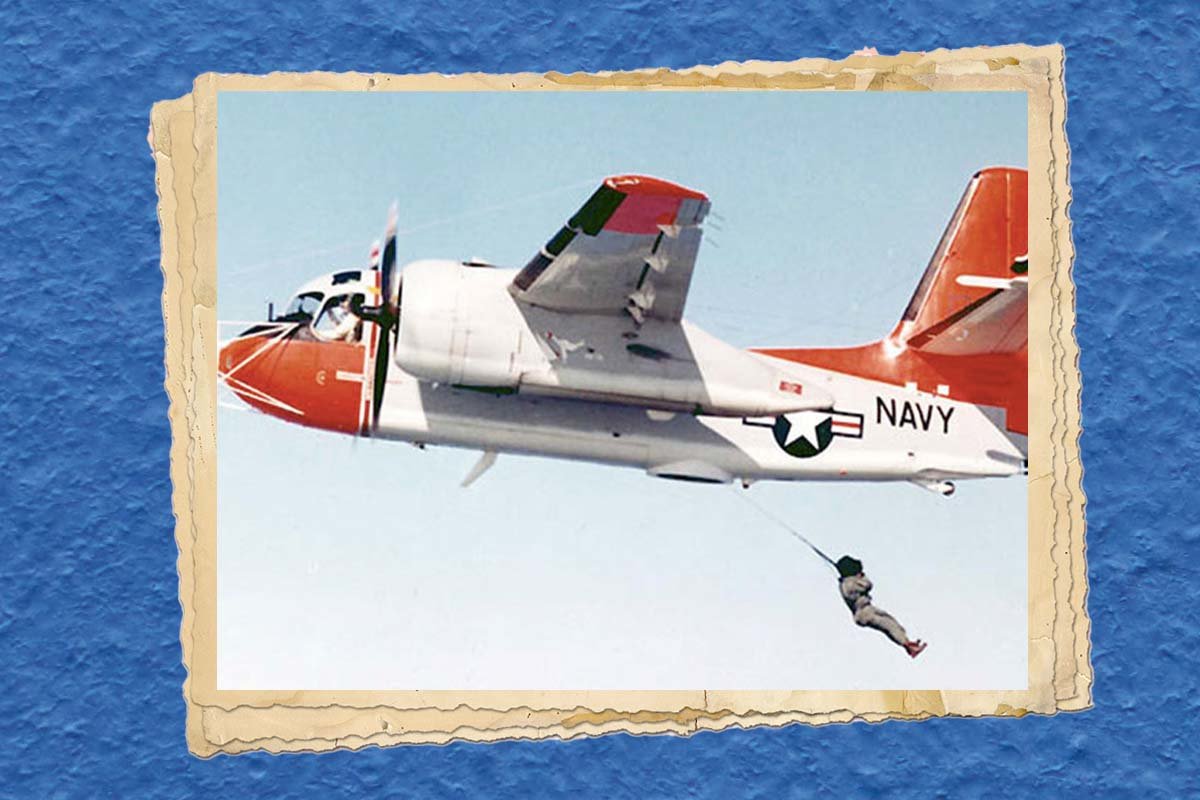The CIA Used the Fulton Skyhook To Raid an Abandoned Russian Ice Base

The first operational use of inventor Robert Fulton’s Skyhook system for human pickup came in 1962 when the CIA conducted Operation Coldfeet in the Arctic to secure valuable intelligence at an abandoned Russian research facility. Composite by Coffee or Die Magazine.
When the CIA spotted an abandoned but still intact Russia research station in the Arctic, it knew it wanted to get some American operators to the site fast.
The problem would be getting them out.
For that, the spy agency and the Air Force would team up for the first use of one of the craziest military systems ever to be implemented: the Fulton Skyhook.
Perhaps no real military system has ever seemed more Hollywood-esque than the Fulton Skyhook. The Batman-like gadget floated a helium balloon on a line into the sky while cargo or a person on the ground was attached by way of a harness. A military or CIA aircraft would then swoop overhead and grab the line, yanking the payload off the ground and reeling it into the aircraft.
A video in the CIA’s YouTube series, The Debrief: Behind the Artifact, examines the crazy system and how it was used in real life.
Inventor Robert Fulton had built various prototypes during the 1950s, all initially designed to recover downed airmen. But no practical use was found until 1961, when the United States discovered an abandoned Soviet research station in the Arctic. The CIA launched Operation Coldfeet to investigate.
“On May 28, 1962, [Lt. Leonard] LeSchack and Maj. James Smith parachuted down onto the ice,” said Janelle Neises, the deputy director of the CIA Museum. “They actually took photographs of all of the facility and discovered over 150 pounds of paperwork, samples, and equipment. It was a trove of intelligence that the Soviets left behind.”
The CIA officers were only supposed to be in this harsh environment for 72 hours, but a dense layer of fog delayed their extraction. Although the fog remained on the day of the pickup and 30-knot winds wailed on the surface, CIA pilots with experience flying World War II-era B-17s swooped overhead.
“The B-17 came roaring in, 425 feet above the ground, and picked up the bag full of all of the intelligence,” Neises said. “Next, it was LeShack’s turn, and things did not go very well for him at first. He was pulled across the ice for 300 feet on his stomach before being able to correct his position.”
LeSchack and Smith were pulled into the passing plane and Operation Coldfeet became the first operational use of the Skyhook system. The intelligence gathered provided the CIA with insight into Soviet research and technology related to ice acoustics and anti-submarine warfare tactics.
Read Next: 8 CIA Artifacts That Provide a Historical Timeline of Intelligence

Matt Fratus is a history staff writer for Coffee or Die. He prides himself on uncovering the most fascinating tales of history by sharing them through any means of engaging storytelling. He writes for his micro-blog @LateNightHistory on Instagram, where he shares the story behind the image. He is also the host of the Late Night History podcast. When not writing about history, Matt enjoys volunteering for One More Wave and rooting for Boston sports teams.
BRCC and Bad Moon Print Press team up for an exclusive, limited-edition T-shirt design!
BRCC partners with Team Room Design for an exclusive T-shirt release!
Thirty Seconds Out has partnered with BRCC for an exclusive shirt design invoking the God of Winter.
Lucas O'Hara of Grizzly Forge has teamed up with BRCC for a badass, exclusive Shirt Club T-shirt design featuring his most popular knife and tiomahawk.
Coffee or Die sits down with one of the graphic designers behind Black Rifle Coffee's signature look and vibe.
Biden will award the Medal of Honor to a Vietnam War Army helicopter pilot who risked his life to save a reconnaissance team from almost certain death.
Ever wonder how much Jack Mandaville would f*ck sh*t up if he went back in time? The American Revolution didn't even see him coming.
A nearly 200-year-old West Point time capsule that at first appeared to yield little more than dust contains hidden treasure, the US Military Academy said.












